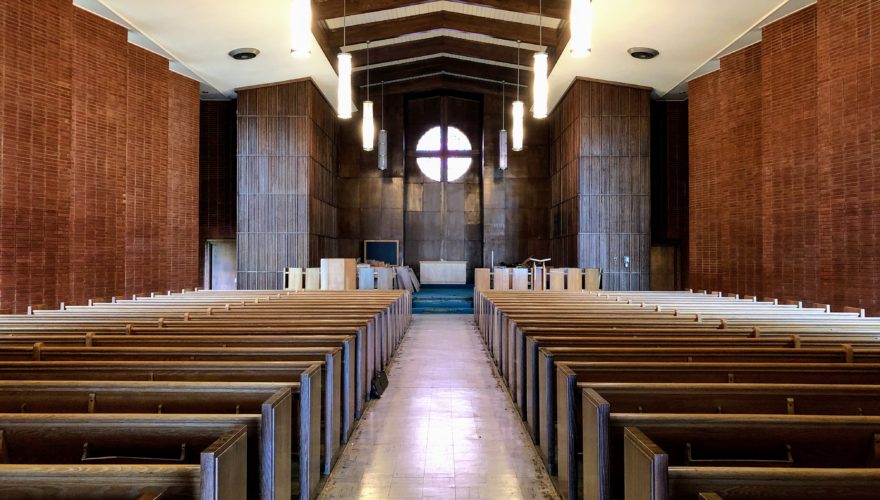NC HEALTH NEWS: Former chapel on NC’s Dorothea Dix campus to reopen, welcome visitors, events

By Thomas Goldsmith
The chapel that patients and staff at Raleigh’s Dorothea Dix Hospital attended for almost 60 years is getting a $2 million facelift and will greet visitors to Dix Park as well as offer concerts, community meetings, educational programs, spiritual events and more.
The All Faiths Chapel opened in 1955 as a brand new resource for people at Dorothea Dix, a state-run hospital for people with mental illness, substance abuse problems, and intellectual disabilities that housed people from all over North Carolina. It closed along with the hospital in the 2010s, but the imposing red-brick building with a soaring sanctuary appears much as it did during its life as a church, when patients such as Lori Brinson, of Asheville, found it a refuge on the campus.
The chapel that patients and staff at Raleigh’s Dorothea Dix Hospital attended for almost 60 years is getting a $2 million facelift and will greet visitors to Dix Park as well as offer concerts, community meetings, educational programs, spiritual events and more.
The All Faiths Chapel opened in 1955 as a brand new resource for people at Dorothea Dix, a state-run hospital for people with mental illness, substance abuse problems, and intellectual disabilities that housed people from all over North Carolina. It closed along with the hospital in the 2010s, but the imposing red-brick building with a soaring sanctuary appears much as it did during its life as a church, when patients such as Lori Brinson, of Asheville, found it a refuge on the campus.
The facility needs work because of some deterioration, changing building standards, and the need to meet provisions of the Americans with Disabilities Act, said John Ramsey Jr., son of the original architect John Ramsey Sr. and a supervisor of the chapel’s renewal.
“It’s been used pretty much continuously as a non-denominational, non-sectarian chapel facility for the patients of the hospital,” Ramsey said during a recent visit to the building.
Weddings, concerts, services
The City of Raleigh bought the property from the state in 2015 for use as a destination park near downtown. Under city ownership and the participation of the Dix Conservancy, the chapel could reopen as soon as late 2020 or early 2021.
“Weddings will be held here, possibly funerals will be held here, other spiritual services will be held here,” Ramsey said. “There will be musical concerts, educational enrichment programs. The building seats over 500 people, so it will be a significant venue for that kind of thing in Raleigh.“
Projected work on the chapel will cost about $2 million, not including donated materials and services. Unexpected expenses could emerge, as during any older building’s reworking, said Millan Edmondson, operations manager for the Dorothea Dix Park Conservancy, the nonprofit group that works with the City of Raleigh on developing and fundraising for the 308-acre property.
“You never know once you go in there what you’re going to find,“ Edmondson said. “We’ll have a more detailed budget once things get moving.”
History a pillar of project
Garner resident Clarence Boyd, an administrator at Dix hospital from 1969 to 1985, has long pushed for more attention for the chapel, where he was married while working on the campus. “The first thing I was advocating for was the restoration,” said Boyd, 85. “The second thing, I don’t think anybody has picked up on, but I feel strongly that after the renovation it be made a memorial to the patients, their families and the staff who were part of the hospital."
Edmondson said the church’s former narthex, or lobby area, will welcome visitors as the park’s first “public-facing” space. The long history of the property, from its cultivation by Native Americans to its occupancy by Dorothea Dix Hospital, will be presented in-depth elsewhere in the park, but will emerge in some form at the chapel entrance area.
“The history is one of the pillars we look at in every aspect of the master plan,” Edmondson said. “The ecology, the history and the legacy there are aspects we want to make sure to maintain. A lot of this will be determined by programming, but it is a very important part to everyone involved.”...
Article( including photos and video) originally published by North Carolina Health News
